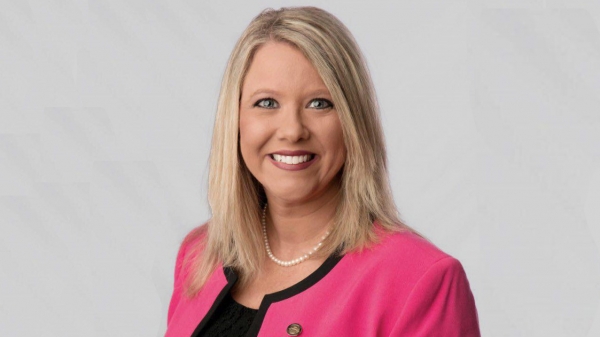By Chip Brownlee
Alabama Political Reporter
MONTGOMERY — An up-or-down vote in committee Tuesday will decide the future of the Alabama Prison Transformation Initiative, an $845-million plan two years in the making that would authorize the construction of three new regional men’s prisons and a new women’s prison.
The House Judiciary Committee will meet Tuesday morning to take up Senate Bill 302, which would authorize the plan. The bill’s sponsor, Sen. Cam Ward, said Monday he gives the bill a 50-50 chance of passing.
“It’s pretty split,” Ward told APR. “You’ve got so many factions down there in the House. What will come out tomorrow will probably be something between our plan and the worst-case scenario, which is nothing.”
The Senate passed a compromise version of the bill in March, but the House committee and the full House still have to pass the plan. Lawmakers have been working for nearly a month to revamp the proposal before it gets to the floor.
The new plan would include the three 4,000-bed regional prisons that were in the Senate version but would also add back in authorization for a new 1,200-bed women’s prison to replace the Julia Tutwiler Prison for Women, a portion of the plan which was removed in the final Senate version.
A local option would allow counties and municipalities to bid to take out their own bonds to construct the three men’s prisons, which would cost about $215 million apiece. If no counties or cities step up to take the prisons, ADOC would be authorized to move forward with taking out $645 million revenue bond to finance up to three prisons. There could also be a mix between local-backed and ADOC-back prison bonds.
Most other existing state prisons would be closed once the three new men’s prisons are completed. ADOC’s initial proposal for the APTI would have consolidated 14 of Alabama’s 16 major correctional facilities into the four new prisons.
Another $200 million in ADOC bonds would be used to build the new women’s facility to replace Tutwiler and renovate existing men’s facilities. The total bond is capped at $845 million.
Though the plan is an attempt to address overcrowding and systemic understaffing problems, it doesn’t completely alleviate them. The plan would reduce overcrowding from about 175 percent capacity to a little more than 125 percent capacity over the next five years — and only if all three prisons are built.
“If we don’t do something soon, the federal courts are going to end up ordering us to pay millions of dollars anyway,” Ward said. “We can’t keep kicking the can down the road.”
The Federal Judiciary has shown increasing impatience with Alabama’s prison system. In recent years, conditions at Tutwiler Prison were so bad that a Federal court ruled them unconstitutional and ordered improvements. The US Department of Justice launched a larger investigation in 2015.
ADOC is also facing a looming ruling in a mental-health lawsuit filed by the Montgomery-based Southern Poverty Law Center. The SPLC also has a medical lawsuit that is waiting to go to trial in the next year.
But SPLC Legal Director Ronda Brownstein said the proposal would not solve the pressing legal issues of included in their lawsuits that are pending in federal court.
“If we had unlimited resources in Alabama, I would be all for this, but every dollar we spend on this takes money away from other things that we need to be doing,” Brownstein said. “We need to be hiring more corrections officers and mental health staff.”
Alabama’s prisons currently house about 23,000 inmates in a system built mostly in the 1970s for a max of 13,000 inmates, according to the most recent ADOC statistical reports.
The State prison population has decreased from about 27,000 after the Legislature passed sentencing reform measures in 2013. The addition new prison could alleviate the overcrowding problem over time, proponents have said.
But overcrowding isn’t the most pressing problem to some legislators. Rep. Allen Farley, R-McCalla, said ADOC should take a more holistic approach, raising salaries for corrections officers and tackling mismanagement and alleged corruption in the prison system.
“We need to address the management issues, the corruption issues that we hear about: the drugs, the gangs, the violence,” Farley said. “Let’s spend whatever we’ve got to spend correcting that and then plan B would be what do we need to do to expand some of these facilities or which is the very worst that needs to be rebuilt.”
It isn’t clear whether the proponents have the votes they need to pass the plan. APR tallies suggest the plan may have trouble getting out of committee.
If it even makes it out of the House, lawmakers would only have a few days to get the plan back up to the Senate, through conference committee and passed there again. That might be a tight squeeze with only five legislative days left.
Opponents have asked Gov. Kay Ivey to call a special session to address prison construction.
By consolidating the prisons into three mega-facilities, the State could save $47 million a year — enough to finance the bond payments — and wouldn’t need as many guards, ADOC officials have said.
The plan would be financed through revenue bonds, which could only be used for capital investment such as building new facilities and renovating existing ones. The revenue bonds could not be used for hiring new staff or stocking the prisons with new health equipment.
To spend more money on corrections officers and security at existing prisons would require an increase in ADOC appropriations within the General Fund. The General Fund has been facing deficits for years, and lawmakers have shown no appetite for increasing taxes.
“Here’s what I would say to them: Where was their amendment to the General Fund to do that?” Ward asked. “If they’re serious about that proposal, why didn’t they offer the needed amendments to the General Fund. So I don’t know how serious their idea is.”
But paying back the revenue bonds would take up a chunk of ADOC’s appropriations, limiting their resources available for other uses. ADOC officials say they will save enough from consolidation to finance the bonds without affecting existing appropriations. This is a way to improve the prison system without raising taxes, proponents have argued.
“You can’t pay for salaries with a bond issue,” Ward said. “I keep hearing that we could use this money in a better way. Not this money. The only way you can use bond money is for one-time construction.”
That idea all depends on if the savings actually happen. The Alabama Law Enforcement Agency was formed in 2015 out of the consolidation of three state law enforcement agencies and nine divisions.
That consolidation was expected to save more than $250 million over a decade, but those savings haven’t been actualized. ALEA requested a $60 million budget increase in January after a 30 percent drop in state troopers on the highways since 2009.
The savings projection has been confirmed by the Legislative Fiscal Office, the Department of Finance and the National Institute of Corrections, but that’s not sure-fire.
But the overall size of the proposed bond issue is just too large for some legislators.
“If an outside agency like the National Institue of Corrections were to come in here and give us a full assessment then I’ll support it,” Farley said. “I just don’t think the people we have looking at it now have the expertise to tell the taxpayers that we need to put you in debt $50 million a year for the next 30 years.”
Email Chip Brownlee at [email protected] or follow him on Twitter.




















































